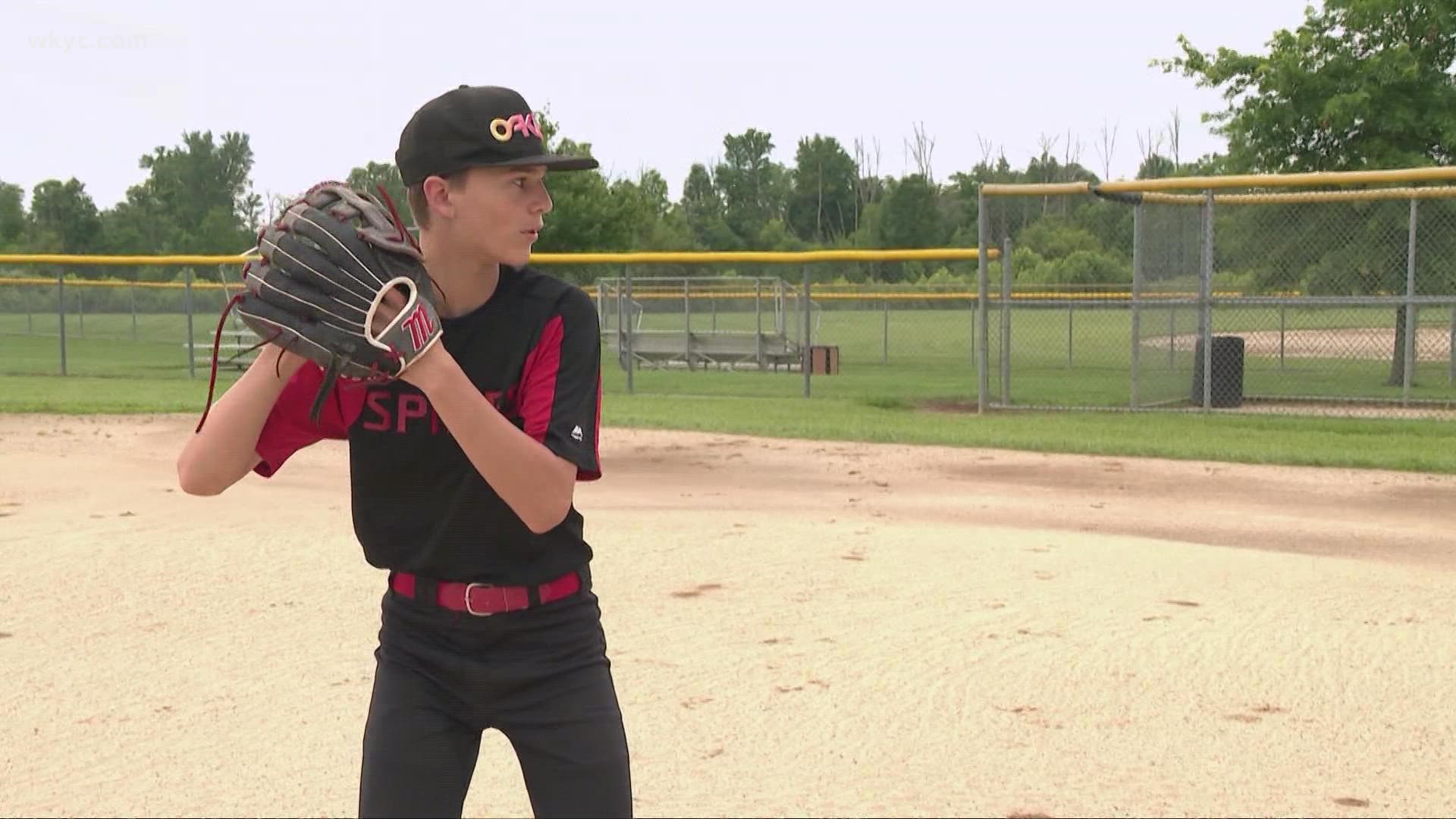GRAFTON, Ohio — In the United States, roughly 30 million children and teens take part in organized sports.
Injuries can always occur, but this year is different. Physical therapists are seeing more kids dealing with strains, tears and stress fractures.
And the cause, they believe, has a lot to do with COVID.
Take, for example, Kaiden Vogelpohl. He fell in love with the sport of baseball at 6 years old. Today, at 13, he is one of the top young pitchers in the area. His plans include playing in high school, college and he dreams of playing in the MLB. His idol: Ken Griffey, Jr.
He's learned a lot in the past year, including how hard rehabbing from injuries can be. Since teams got the OK to play ball last summer during the pandemic, he has been sidelined twice.
"I felt something off in my elbow. Every time I threw it hurt, and it just stung for a couple of days. So we went and got it checked out, and it turns out my growth plate came off my elbow," Kaiden said.
First his elbow, then this year, his throwing shoulder also shut down his pitching. In both cases, the injuries involved Kaiden's growth plate.
Editor's note: Video in the player above was originally published in May of 2020.
Kaiden was diagnosed by a sports medicine specialist with University Hospitals, and has gone through months of rehabilitation to heal and strengthen areas of his arm.
These types of injuries are not uncommon in children -- especially those who are undergoing growth spurts -- but Dr. Laura Goldberg, who is familiar with Kaiden's case, says parents need to take them seriously.
"I saw elbow injuries and shoulder injuries and growth plates because the growth plate is an area where there's rapid cell turnover. And they're not really designed to see the loads that we put at them in baseball."
And it's not just baseball, but other youth sports that saw injuries jump since last summer. Dr. Goldberg points to COVID.
"When you condense the seasons and try to fit things in, that is a setup for an overuse injury," Dr. Goldberg said.
And that was the case for Kaiden last year. The season started late, and the team, like many others, played more games than usual in a shorter amount of time.
"It was hard," Kaiden said. "You were always playing tired."
No preseason. Condensed seasons. And add to that the impact of some seasons being canceled all together. For example, when high school track got cancelled in 2020, it impacted the conditioning and training for athletes who also run cross country in the fall. Athletes were idle longer, setting themselves up for a greater chance at getting injured once they resumed training in the summer.
"A lot of injuries we see in all ages is from that change in intensity," Dr. Goldberg said. "From sitting, doing nothing, to doing too much. And the best way to prevent that is to make sure you are active."
Her rule of thumb is doing anything with sustained intensity for 50 to 60 minutes a day based on your fitness level. And if your young athlete does start experiencing pain in their sport, a word of caution: adult aches and pains -- and kid aches and pains are not the same -- especially when growth plates are involved.
"My rule of thumb is the longer you've had it. The longer it takes to go away, meaning that the longer you seek help or treatment, the less likely you're going to heal quickly," Dr. Goldberg said.
Kaiden's mom, Brittany Vogelpohl, agrees, and from her family's experience she offers this advice: "Make sure if your kid tells you their arm is hurting, don't blow it off. Go and get it checked. Unfortunately we waited a little bit."
Tough lessons for a young pitcher. But Kaiden and his family now have a new perspective. He is playing in games, but is not allowed to pitch yet, though he does have the green light to throw in practice with strict limits on speed, intensity and number of throws.
And when he eventually does pitch again, Kaiden's parents and his new coach are all on the same page about his health. Rest always comes before team records -- no matter what -- so that Kaiden can stay in the game, for years to come.
Keep in mind, the top culprits for youth sports injuries are overtraining and specialization, which the University of Wisconsin School of Medicine defines as participating in a single sport, for more than 8 months out of the year.

